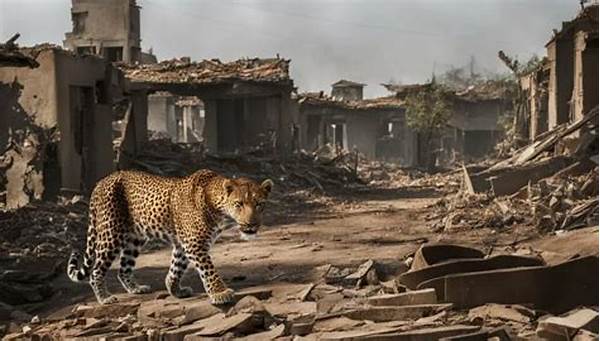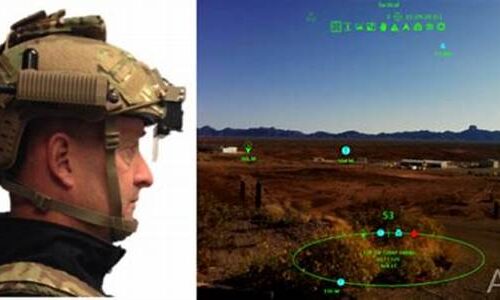The phenomenon of habitat loss in conflict zones represents a multifaceted challenge that merges environmental degradation with the complexities of human strife. As hostilities unfold, the environments within war-torn areas suffer systematic degradation, affecting biodiversity and ecological balance. This pressing issue demands concerted efforts from international stakeholders and local governance to mitigate its far-reaching consequences.
Impact of Warfare on Natural Habitats
Habitat loss in conflict zones is often overshadowed by the immediate humanitarian concerns that wars bring. However, the degradation of natural habitats is an issue of great significance, which has long-term implications on biodiversity and ecosystem health. The disruption of human activities in conflict-affected regions can lead to both direct and indirect impacts on the environment. Direct impacts include deforestation, pollution, and the depletion of natural resources due to the movement and needs of armed forces as well as displaced populations. Indirect effects are often manifested through the collapse of regulatory frameworks and conservation efforts that would otherwise protect these ecosystems.
For instance, protected areas that serve as essential biodiversity reservoirs become vulnerable due to a lack of enforcement and monitoring. The prolonged absence of governance and institutional oversight in such regions exacerbates habitat loss. Furthermore, the use of certain military tactics and warfare technologies also contributes to environmental degradation. Chemical warfare, bombing, and land mines not only pose an immediate threat to human life but also cause irreparable damage to the ecosphere. The ensuing habitat loss disrupts local wildlife, leading to species displacement and sometimes extinction. By understanding and addressing habitat loss in conflict zones, a holistic approach to post-conflict recovery and ecological restoration can be developed and implemented.
Consequences of Habitat Degradation in Conflict Areas
1. Habitat loss in conflict zones often leads to the extinction of endemic species, resulting in a loss of genetic diversity.
2. The fragmentation of ecosystems impacts animal migration patterns and reduces the resilience of environments to natural disasters.
3. Soil degradation from warfare diminishes agricultural capacity, contributing to food insecurity in affected communities.
4. Water bodies become polluted through chemicals and debris, exacerbating health risks for humans and wildlife alike.
5. Displaced human populations exert additional pressure on the surrounding environment as they rely on limited local resources for survival.
The Role of International Organizations
International organizations play an essential role in addressing habitat loss in conflict zones. They provide expertise, resources, and coordination necessary for environmental conservation and rehabilitation. Through policy development and on-ground initiatives, these organizations aim to restore ecosystem functionality and promote sustainable use of natural resources. Moreover, international collaborations help in raising awareness and mobilizing resources for habitat restoration efforts. By establishing conservation programs that prioritize ecological balance, these entities are pivotal in mitigating the environmental aftermath of conflicts.
The efforts of international organizations extend beyond emergency response, often incorporating long-term strategies that focus on rebuilding conservation infrastructure and capacity building within local communities. This approach not only aids in reviving ecosystems but also contributes to the socio-economic restoration of war-impacted regions. Interventions are designed to foster resilience in both human and natural communities, creating a sustainable path towards recovery. Collaboration with local governments and stakeholders is integral, ensuring that initiatives are sensitive to the cultural and ecological particularities of each conflict zone. Habitat loss in conflict zones demands a comprehensive framework of international cooperation to effectively address the challenges posed.
Rebuilding Ecosystems: Challenges and Solutions
Rebuilding ecosystems in conflict zones presents an array of challenges but also opportunities for innovative solutions. The long-term impact of war on the environment necessitates strategies that not only rehabilitate but sustain ecosystems post-conflict. Key challenges include the presence of landmines and unexploded ordnance, which hinder restoration efforts and pose risks to human life. Additionally, the lack of baseline ecological data from before the conflict complicates efforts to assess and prioritize restoration activities. Another hurdle is the potential resistance from local communities due to competing land use interests.
Overcoming these challenges requires the integration of advanced technologies and community involvement. Remote sensing and geospatial analysis offer tools for mapping and monitoring degraded habitats, allowing for efficient allocation of resources in the restoration process. Furthermore, engaging local populations in restoration activities encourages stewardship and provides livelihood opportunities, creating a sense of ownership over conservation efforts. Building synergies between governmental agencies, non-governmental organizations, and local communities is crucial for the success of these initiatives. Thus, addressing habitat loss in conflict zones requires not only biological and technological solutions but also a socio-political commitment to long-lasting peace and sustainability.
Case Studies of Habitat Restoration
Examining case studies of successful habitat restoration in conflict zones highlights the resilience of nature and the importance of coordinated efforts. In regions affected by prolonged conflicts, biodiversity hotspots have shown remarkable recovery when systematic restoration projects are implemented. These projects often require a multifaceted approach, combining reforestation, soil rehabilitation, and wildlife reintroduction. For example, in areas previously devastated by warfare, the rehabilitation of wetlands and reintroduction of native plant species have played a significant role in re-establishing natural water cycles and improving soil fertility.
These efforts are generally supported by comprehensive policy frameworks and cross-sectoral collaborations that engage a myriad of stakeholders including governments, non-profits, and local communities. Beyond the ecological benefits, such initiatives often serve to rebuild the social fabric of conflict-torn regions by creating employment and fostering community solidarity. Addressing habitat loss in conflict zones through restoration not only aids in ecological recovery but also contributes to broader socio-economic reconstruction. It exemplifies the potential for positive change when human and environmental needs are aligned in post-conflict settings.
The Importance of Integrated Environmental Policies
Integrated environmental policies are vital in mitigating habitat loss in conflict zones. Not only do these policies offer a strategic blueprint for ecological conservation, but they also ensure that environmental considerations are embedded within post-conflict reconstruction efforts. These policies advocate for the sustainable management of natural resources, emphasizing the need for environmental governance even amidst the complexities of conflict recovery.
By aligning environmental initiatives with broader socio-economic goals, integrated policies address the multifaceted challenges faced in conflict zones. This holistic approach is crucial for balancing ecological preservation with human development needs, fostering resilience and sustainability in post-conflict societies. The implementation of such policies involves cross-sectoral coordination and international cooperation to ensure that all aspects of environmental restoration are adequately addressed. In doing so, these policies mitigate the adverse effects of habitat loss in conflict zones and catalyze pathways to lasting ecological and social stability.
Summary
In conclusion, habitat loss in conflict zones is a profound issue that necessitates attention and action from a global perspective. The intersection between warfare and environmental degradation demands a multifaceted response that integrates ecological conservation with peacebuilding efforts. While challenges remain formidable, the concerted efforts of international organizations, governments, and local communities present opportunities for meaningful change. Through innovative restoration strategies and integrated policy frameworks, the pathway to ecological and socio-economic recovery becomes viable.
The focus on habitat loss in conflict zones underscores the need for a shared responsibility towards our environment, particularly in the face of human-induced adversities. It calls for a paradigm shift in both conflict resolution and environmental management, ensuring that biodiversity conservation is regarded as an integral part of the peace process. As such, the international community must amplify its commitment to addressing these issues, fostering a sustainable future where both human and ecological systems thrive in harmony.





